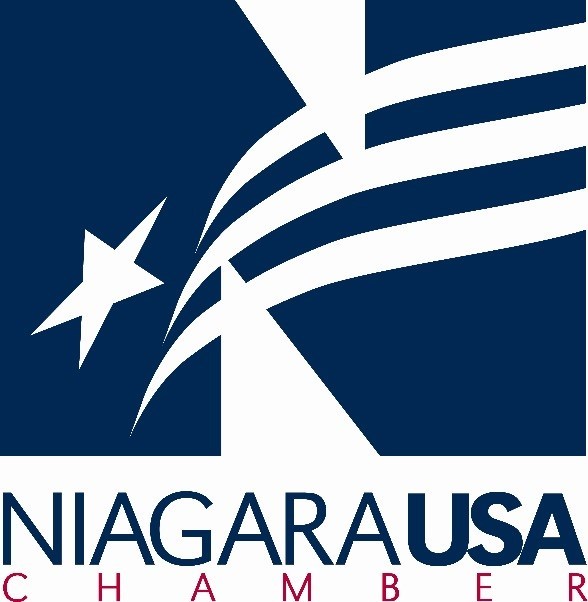Featured News - Current News - Archived News - News Categories
By Lauren Zaepfel
Tribune Editor
The Wheatfield Town Board Monday night heard from North Tonawanda resident Cory D'Agostino, who said the fence planned to be installed around the Niagara Sanitation Landfill in Wheatfield "isn't going to do any good."
D'Agostino has resided on Forbes Street for the past eight years, near the landfill site. He said, "It's just going to keep people out, but it still does not get rid of the problem that we have in our backyard. Kids are riding dirt bikes every day. ... People are sick in our neighborhoods."
D'Agostino said his son, Vincent, 22, suffers health issues with his kidneys and thyroid.
Autumn Kavney, Vincent's fiancée, said, "You know how many fish have been caught there? Deer have been killed and eaten? How many kids have played back there? Had club houses back there?"
Town of Wheatfield Supervisor Robert B. Cliffe said, "That site is under the control of the DEC. We don't control it."
He added, "The object of the fence is strictly to keep motor bikes and people and ATVs out of that area."
In February, state Sen. Rob Ortt secured $75,000 to go toward the cost of the fence, which was estimated to cost up to $150,000. Cliffe said more funds may be secured from the state.
Town Engineer Timothy J. Zuber of Wendel Duchscherer Architects and Engineers, the company working on design plans for the fence, said one of the requirements to retain the state funding is to complete the SEQR process.
The company has created an environmental assessment form and will submit necessary documentation with review from the board to the DEC.
"Basically, putting up a security fence around the landfill, we find, is not going to be doing anything that's harmful to the environment," Zuber said. "It's going to be serving its purpose to further protect the public from getting in there and disturbing the dirt."
Councilman Gilbert Doucet asked Zuber how the fence posts would be installed without disturbing the ground.
Zuber said the company will submit questions on the installation process to the DEC and the U.S. Army Corps of Engineers.
"Probably every third post would have a concrete footer to it," he said. "The remaining two will just be ... drilled into the ground."
Zuber said the area contains potential federal wetlands. Therefore, the process is more complicated than simply installing fence posts in the ground.
Trees and brush would also have to be removed to create a pathway to access the site.
The Town Board voted to authorize Cliffe to sign the environmental quality review.
In other news:
•The board heard from the town's Green Space Focus Group on why it should modify town law on cluster subdivision development to include additional regulations to conserve more natural land.
"Zoning tells you, you have to have a certain size acre lot. ... Cluster development basically is an encouragement tool to preserve important features," said Drew Reilly, engineer at Wendel representing the Green Space Focus Group. These features can include protecting environmental assets, such as large trees, habitats and wetlands. "Basically, cluster development says, if you preserve these important features, on this property, we (will) allow you to put smaller lots in."
He said the concept involves planning to create "pockets" of development, while leaving more green space around infrastructure.
The town already allows cluster developments, however Reilly recommended the law be updated.
"It's a general law. But now that we have the green space plan, we have more focus on what the town is trying to accomplish with the cluster development," he said.
With this adapted law, the Planning Board would be a regular part of the process and would give its recommendations, but ultimately the Town Board would make the final decision.
Cliffe asked how Cobblestone Creek, the most recent cluster development proposed for the town, would be affected by this modification if it were to be adapted.
"At any point in the process, you can say, 'No. We don't like this cluster development. You need to go back to the drawing board or do a regular subdivision,' " Reilly said.
He added, "With a cluster, you can always say 'no.' It reinforces the fact that it's something that you can grant the power to."
Although this process would involve a lot more planning from the board, Reilly said public information sessions could be held at the onset of the process to receive feedback from residents early on.
The law would not only focus on conserving land, but also how the layout of the suggested development fits in with the current character of the area.
For example, the law would allow the board to consider the proximity of rural housing developments to more dense neighborhoods and place restrictions on new developments.
"It's about good planning," Reilly said. "That's why you involve the fire department, you involve the building inspector, you involve the Green Space Committee - how do you make the subdivision work the best for the town?"
Shawnee Fire Co. Chief Marc E. Kasprzak and Water and Sewer Superintendent Richard A. Donner both said they were concerned about the potential difficulties of accessing homes with smaller lots when their services are needed.
But Reilly said, whether it's a cluster or regular subdivision, all requirements set in place by the town and state must still be met.
"We're not changing the law that's existing at this point," Cliffe said. "We're adding certain features to it."
No action was taken after the public hearing. After the meeting, Cliffe said the board will discuss the suggestions from the Green Space Committee. However, a time frame for movement from the board was not determined.
•Legislator Kathryn Lance, R-Wheatfield, presented the town with a check for $4,275 from casino revenues to help the town pay for its new traffic sign. The money will cover half the cost of the sign, which will be used to help decrease speeding in the town.
"One of the ongoing problems all through Wheatfield is the speeding that goes on," Lance said. "I asked Supervisor Cliffe what he thought and he came up with the fabulous idea of the town buying their own speed sign that we could place in different streets." The sign is planned to be set up at different locations over time, including on Krueger Road, Niagara Falls Boulevard, Sy Road and Ward Road.
•The board approved a bond resolution for $600,000 to replace two deteriorating pipe culvert structures in the town with concrete box culverts.
The culverts, one on Lemke Drive and the other on Errick Road, allow water to pass under roadways, acting similar to a bridge.
"They were put in at the time the road was put in, which is probably 50 years ago," Cliffe said.
The current pipe of the culvert on Lemke Road is too small to function properly and, as for the one on Errick Road, Cliffe said, "the head wall around the pipe is collapsing, and the pipe itself is deteriorating. It's getting weaker, and it's not big enough to really do the job."
The new concrete box culverts will allow more water to pass through the area, and will last for another 50-80 years, Cliffe said.
He said the board hopes both culvert replacements will be finished by the end of the summer, before school begins.
The cost would include the replacement and installation of new culvert piping, walls and related site improvements.
"We don't know how much we're going to borrow," Cliffe said. "That will be decided once (we) put bids out. ... But (we) have to start with something in the bonding resolution. ... We have to put it out there."
The board worked with the Harris Beach law firm on the bond, with the town's budget director, Ed Mongold.





























